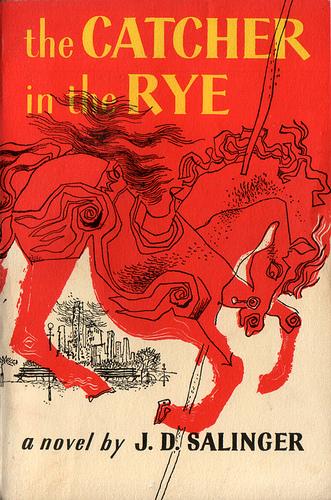A New Look at an Old Classic: The Catcher in the Rye

The cover of the literary classic.
In 2013, The Catcher in the Rye may seem a little dated. Published over sixty years ago by notorious recluse J.D Salinger, the novel became second to The Bible in the most influential works of literature in world history. It has inspired a countless number of writers, actors, and politicians, whose lives were changed after reading the book. Titans of the film industry such as Leonardo DiCaprio, Marlon Brando, and Steven Spielberg even tried to adapt the story to the big screen. Soon after the novel came out in 1951, it had an incendiary effect on the public. It was considered immoral and vulgar by adults, while teenagers willingly embraced it. Basically, it was the literary version of Elvis. But today, many teenagers reading the novel have a hard time dealing with Holden, and consider him to be a whiny, narcissistic brat.
Popular young adult fiction novels today include protagonists such as Katniss Everdeen and Harry Potter, two very sympathetic characters who vehemently fight against overwhelming odds. (Imagine how Holden would do in the arena?) Modern teenagers aren’t used to reading novels about alienated and depressed characters such as Holden. But even though it was published in the 1950s, The Catcher in the Rye still deftly captures the essence of what it’s like to be a teenager. Though Holden is whiny and self-involved, how many sixteen-year olds aren’t like that? Holden is often a hypocrite and is a very flawed human being, but his unique insight about the world makes him one of the most complex and enduring characters in 20th century fiction. As what Salinger says about Holden in the original jacket copy of the book: “The boy himself is too simple and too complex for us to make any final comment about him or his story. Perhaps the safest thing we can say about Holden is that he was born in the world not just strongly attracted to beauty but, almost, hopelessly impaled on it.”

